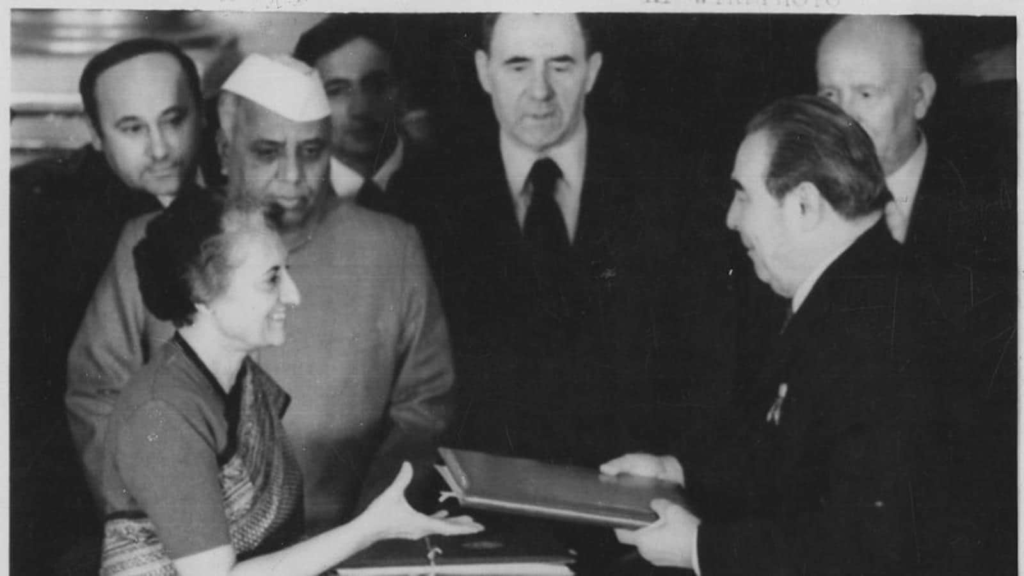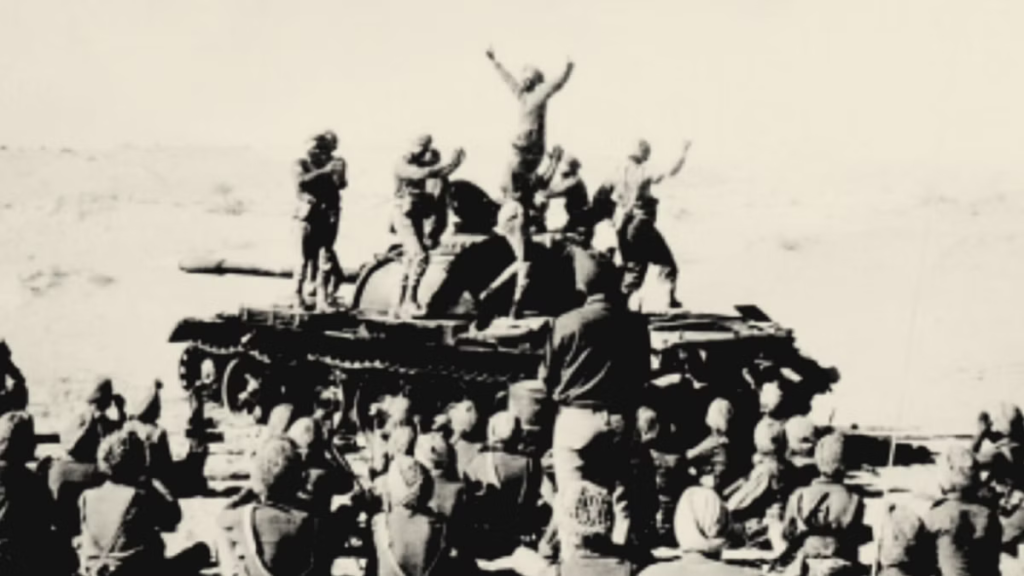Indian Air Force superiority established
Sunday Musings by Shekhar Nambiar
Come October and I get the opportunity toremember the war our fighting forces won for us and helped in the liberation of Bangladesh in 1971. It was the monthI travelled to Dehradun on a school trip and vividly recall the troop mobilization on the borders with Pakistan. Our cantonments in Meerut, Roorkee and Dehradun – as I saw them – emptied out with the troops leaving to take up forward positions.
Also read: Living next door to Gurugram
Almost exactly a month-and-half later – on December 3 – India’s bugle call for war with Pakistan sounded the death knell of Pakistani stranglehold over their eastern colony. It was the beginning of the end. Bangladesh was born soon thereafter.

December 16 ended Pakistan’s forced control over East Pakistan when its army commander in Dhaka, Lt Gen A A K Niazi, laid down arms, signed and handed over the Instrument of Surrender to Lt Gen Jagjit Singh Aurorain Dhaka. Along with Niazi surrendered some 90,000-odd Pakistani defence personnel, incapacitating the country’s strategic and tactical hold over things completely. The rest, as they say, is history.
Also read: Megacity Mumbai as I recall
Struggle for liberation
India had been taking stock of the situation in East Pakistan for some time, more so after political talks were deadlocked and things came down to a boil following the military crackdown, and the genocide, on civilians. This led to untold misery and the subsequent influx of displaced persons into India.
Although Sheikh Mujibur Rehman’s Awami League had won a decisive victory in the 1970 hustings, Rawalpindi was in no mood to accept a fiercely pro-independence party that was almost certainly going to stir trouble for them (read the military).

March 1971 saw the Pakistan Army use force to quell the rising tide of pro-independence sentiments.
Also read: Why oh why do I love Kochi!
The Pakistani establishment tried every trick in the bag, including to draft Bihari immigrants and the Jamaat-e-Islami against the Bengali freedom fighters.
On the western borders, meanwhile, Pakistani troops had started flexing its muscles amassing troops on an eyeball-to-eyeball confrontation with Indian forces.
Weighing options
The Indian political establishment and thesenior bureaucracy, including the giant among the PM’s advisers PN Haksar, involved earlier in the nationalisation of banks and the 1971 Indo-Soviet Treaty, were constantly huddled in meetings weighing the pros and cons of all possible ramifications of an Indian intervention in East Pakistan, not least eventualities such as the subsequent entry of the US Seventh Fleet in the Bay of Bengal.
Also read: Road to a carbon-free future
It can be argued the Indo-Soviet Friendship Treaty signed in August 1971 was what emboldened India to taking a decisive step in the east.

Haksar, no doubt, played a major role in advocating India’s support to the liberation of Bangladesh along with Gen Sam Manekshaw (later made Field Marshal). Haksarwas also the pivot in leading the peace talksand the subsequent Shimla Agreement with Pakistan.
Fighting erupts
The immediate provocation for the war that began on December 3 was Pakistani airforce’s violation of Indian airspace and its simultaneous strikes on 11 Indian air bases forcing India to open the Eastern and Western theatres of action.
Earlier as things began to heat up and war seemed inevitable, Indian troops had begun to deploy on the borders. On the school excursion tour to Dehradun and Mussourie, convoy after convoy were moving to forward locations. Clearly, things were heading to a flashpoint. Young at heart and kindled by patriotic fervour, we waved at each and every vehicle as they passed us on their way to the western front.
Also read: Flying high, higher
Moving forward to Delhi in December, we were being prepared for what was surely going to be a conflagration any time. Civil defence teams had become active preparing us for any eventuality, including setting up residents’ night vigil groups to lookout for possible enemy paratroopers and infiltrators, were war to break out. Trenches were dug as air raid shelters. We’d barred our glass window panes to prevent splinters in the event of bombings. We were told to be prepared for long hours of power blackouts. Residents were trained in quick responses to air raid sirens.
My father, still in office at dusk on that day, was keeping track of events over radio. My mother and sister were out to get provisions in anticipation of the impending war. A nervous me paced up and down in front of the house as there was a citywide blackout about the time when India announced its military retaliatory action as Pakistani fighter jets violated Indian air space, and strafed our bases.

Theatres of war
The onward march of Indian forces on the eastern front was decisive and ambitious, with known India baiters accusing it of harbouring intentions to dismember Pakistan.
Also read: Standing the test of time
On the western front, the Indian attack was deliberately measured, if not defensive, in keeping with our known policy of not having any aggressive territorial designs. Still, fighting was bitter and I recall our valiant efforts in securing the line of control, the battle of the Shakargarh bulge, the portion of Pakistan protruding into India, the valour displayed by the young Indian army officer, Second Lieutenant Arun Khetrapal at Basantar, and who was posthumously awarded the Param Vir Chakra. The able air support by the air force was also decisive in keeping the enemy at bay in several places.

Can one forget the Battle of Longewala in the Thar desert of Rajasthan, one of the first encounters of the war, where Indian defenders confronted anassault by a large contingent of Pakistani troops accompanied by tanks? The Indians were grossly outnumbered but their bravery, and with the tactical air support of IAF Hunter aircraft, they held on to their position –making a fight of it. The battle was immortalised throughthe film ‘Border’, much later, in 1997. It became an instant hit across the country.
Also read: Ode to the GP
It is known that India had exercised utmost restraint with the goings-on in the highly sensitive eastern region. But for how long? Were we expected to remain a silent spectator to the genocide of innocent Bengalis? Who was to account for the huge refugee presence?

War propaganda
The propaganda messages spewed from across the border were harsh, loud and most times ugly. All India Radio retaliated calling out their lies through ‘Radio Jhootistan’. These were subtle, certainly more creative and probably even sufficient to counter the Pakistani establishment’s diatribe. As messages go, these also went down well with the population as the entire nation rallied round our fighting forces.
The huge influx of refugees – some 10 million who entered India over a 10-month period to escape Pakistanigenocide – also ended with the new government in Dhaka welcoming their return.
Also read: Simla of my dreams
Adherence to convention
A word of praise as I saw through my young eyes. Post war, as I travelled past Meerut on to Roorkee and beyond, I saw a POW camp. From the highwayI saw Pakistani soldiers in captivity. It was evident that the camp was well maintained and cared for in the highest traditions of the Indian military. All accounts point to India following the established norms at the time and strict adherence to the Vienna Convention.
Of all conflicts since the birth of the two nations, the 1971 war saw the maximum casualties, resulting in Pakistan losing half its navy, a quarter of its air force and a third of the army. We suffered some reverses. The sinking of INS Khukri with Captain Mulla going down with the ship shocked and saddened the nation. On balance, India’s successes were far in excess of the enemy losses.

Following the ignominious defeat of Pakistan, India showed magnanimity and decency by agreeing to sign the Shimla Agreement of 1972 returning all captured territory and the Pak POWs. Something Pakistan ought to learn and follow. Their treachery and deceit in the heights of Kargil remain in our minds and cannot be so easilyerased.
At the end of the day, peace must prevail. It’s good for everyone.
Also read: The wheel has come full circle




